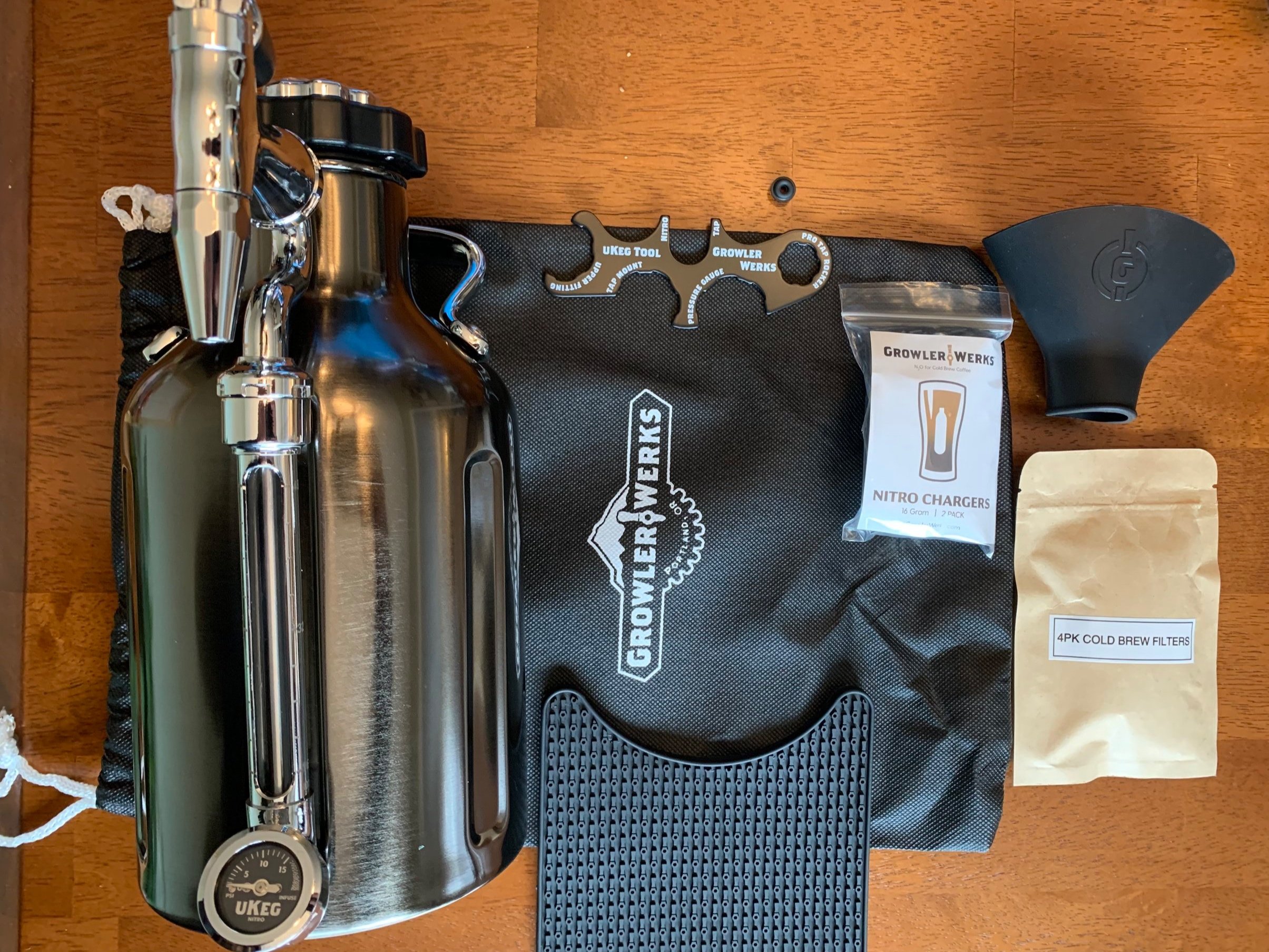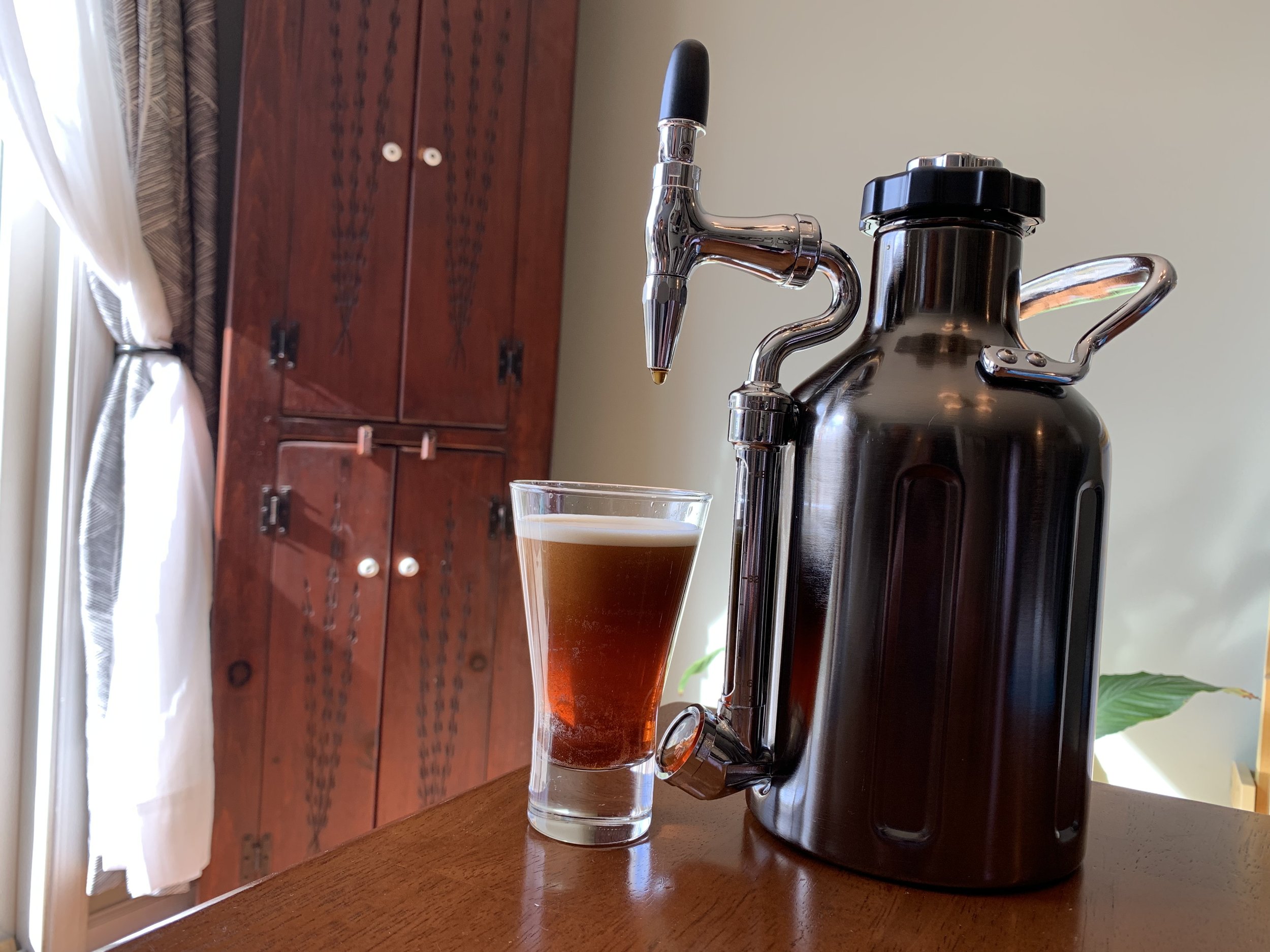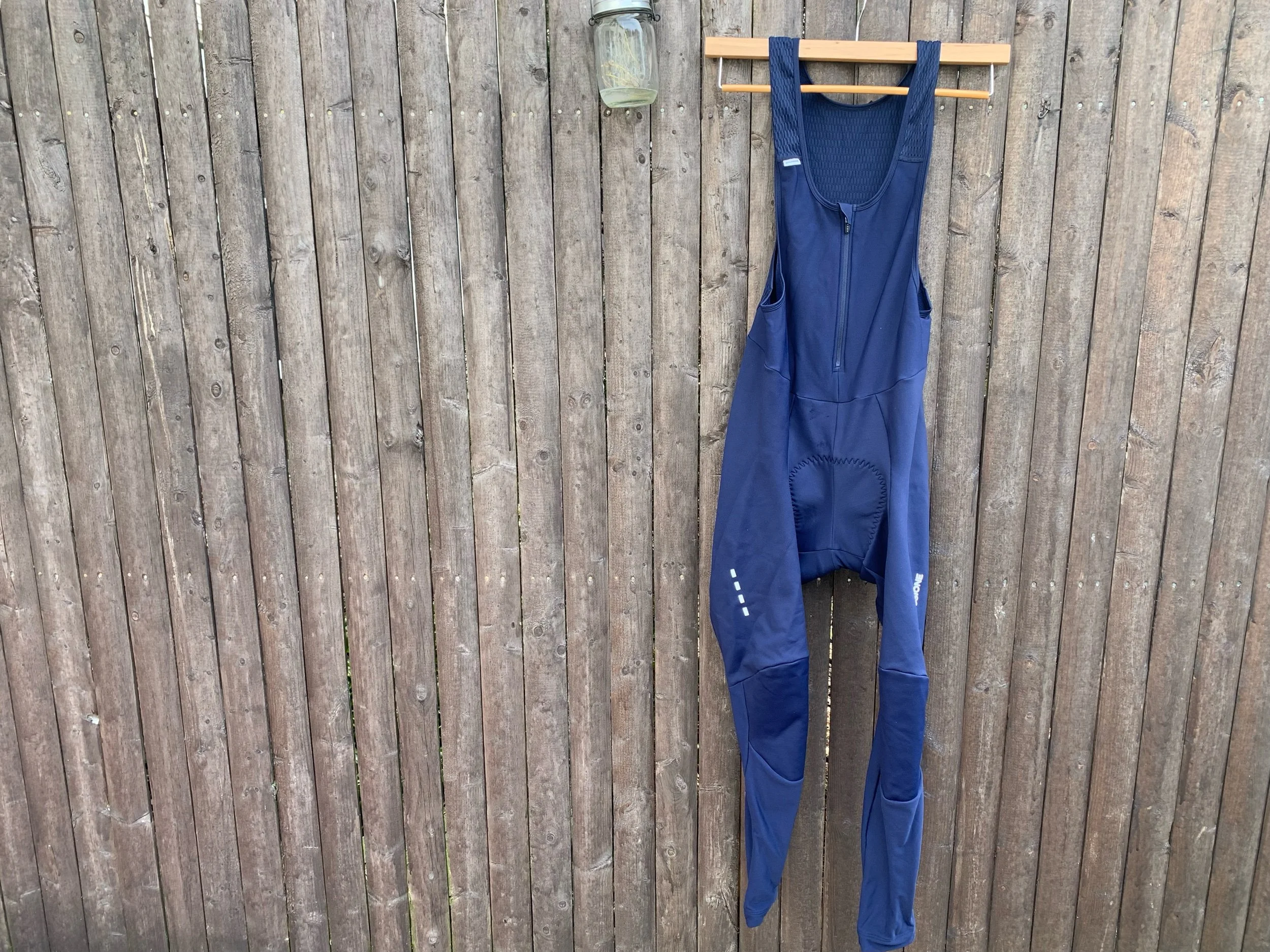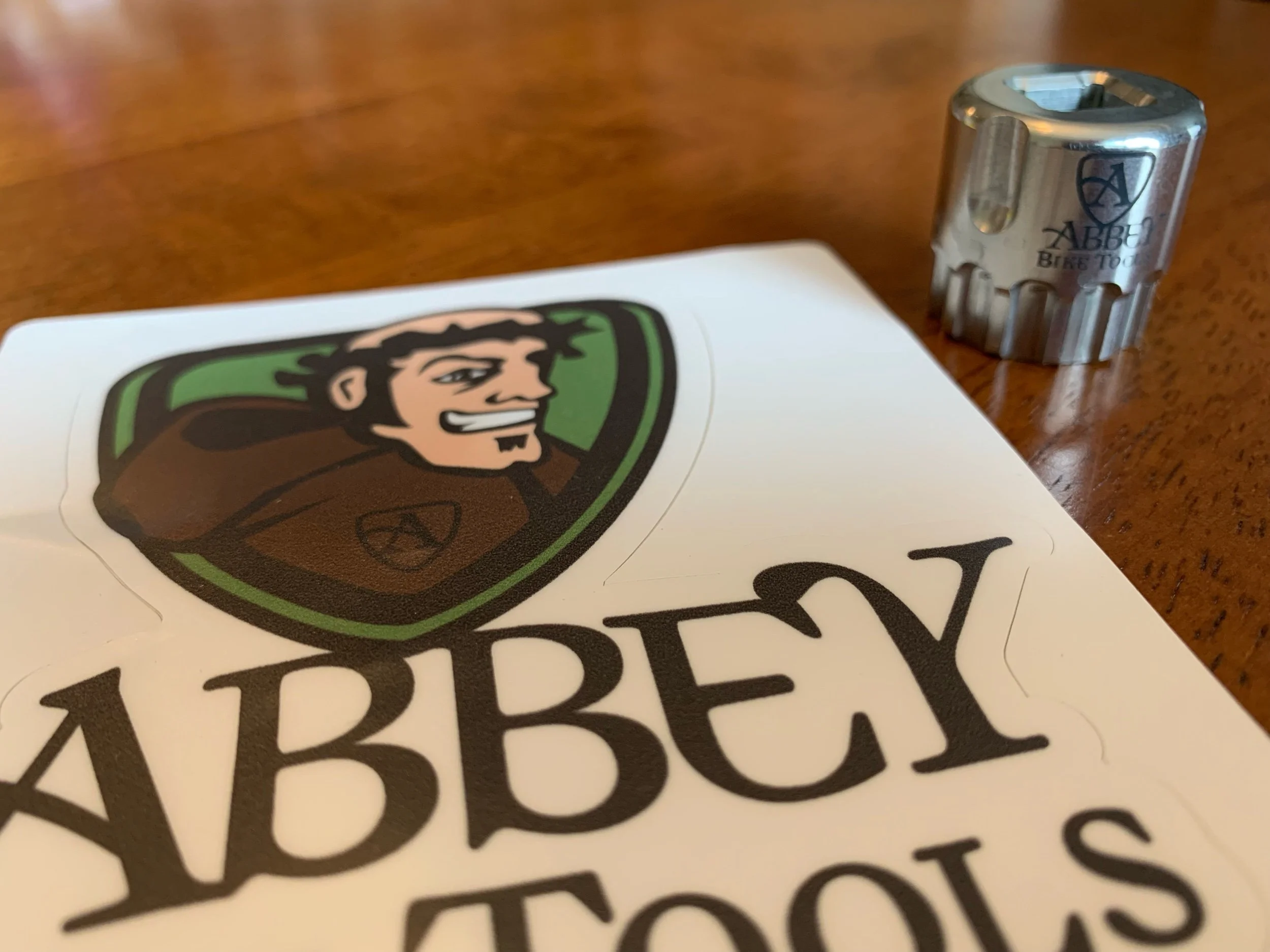Review: Growlerwerks uKeg Nitro Cold Brew Coffee Maker
(2023) To have a Growlerwerks uKeg Nitro Cold Brew coffee maker in the creakybottombracket.com office will be felt by nearby coffee shops. Nitro coffee is not the sole means of caffeine kicks at the office, but it’s great to have options. With a mild winter so far, we experimented with the Growlerwerks uKeg cold brew to temper the above average temperatures. What we found out was the start of so many possibilities.
To make nitro cold brew coffee requires two things: the right equipment and a lot of time. Cold brew coffee is a different approach to coffee making, yielding a different flavor with the same beans. With a different grind of beans, cold water is poured over coffee grounds in a filter. The cold brew then drips into a vessel over time and can be refrigerated. Cold brew tends to be more caffeinated, especially if the shop uses coffee ice cubes, but it’s a hard sell in the winter when customers are looking for warmth. Cold brew can be the end of the process for some, but for others, the implementation of nitro presents a viscous and silky experience of heavy coffee with a frothy head. It can take on the look and feel of a stout on a nitro tap at the local tavern.
Unless one is an at-home brewer, the biggest hurdle to nitro is having the right equipment. Kickstarter Growlerwerks’ uKeg Nitro Cold Brew coffee maker brings the nitro coffee experience home with a beautiful dispenser that fits right in with coffee apparatuses. It was time to open the manual to explore the possibilities of an at-home nitro brew.
The Growlerwerks uKeg Nitro Cold Brew coffee maker comes with everything shown here: stainless steel keg, rubber mat, bag, nitro chargers, filters, funnel, and uKeg tool.
The Growlerwerks uKeg Nitro Cold Brew coffee maker comes with numerous items to use throughout the process. The main item is the growler, a double walled, vacuum sealed, insulated, stainless steel work of art. The growler hosts helpful tools like a nitro pressure gauge, sight tube for measuring coffee, nitro tap, internal double filter, regulator cap, and a carry handle. Further items in the coffee kit include: a rubber serving mat, four coffee filter bags for the first two brews, two nitro gas chargers, a filter bag funnel, and a protective carrying bag. Because of the amount of items within the box, the included manual is helpful to make sense of it all.
Once the equipment was prepped, it was time to get down to business. Sort of. The first steps were to happen initially while the remaining actions took place 24 hours later. To start with, the manual suggested using 120 grams of ground coffee, 60 grams per filter bag. We used Rise Up French Roast on the first effort. The grounds are then to be divided evenly between two filter baffles using the silicone funnel. The bags are tied off and dropped into the growler. Cold water was poured until it reached the “brew” line inside the growler. Cap sealed, and we were to wait for 12-24 hours before taking the next steps.
To complete the nitro cold brew process, we came back the next day with the remaining items in the box. The growler was reopened to the fresh aroma of cold brew coffee. The two filter bags were removed and more cold water was added until it reached the growler’s “full” line. Here is where the dual purpose cap came into play. A nitro (actually is nitrous oxide and not the same nitrogen as used by Guinness) canister is inserted into the cap sleeve and punctured as it is tightened into the lid. For cyclists who have used CO2 canisters to inflate replacement tubes, this should be second nature, but some users have been taken aback by the process. The regulator cap is set to infuse and the user shakes the growler for one to two minutes to infuse everything together. The moment to enjoy the first batch of homemade nitro coffee is here.
Growlerwerks’ manual instructed to use 120 grams total - 60 grams per filter bag - for the cold brew process.
Once the growler was returned to the countertop, the Regulator Cap was turned to pour. The Tap Handle was pulled and to the amazement of everyone at the office, the growler discharged a frothy beverage with a respectable head. The first attempt at homemade nitro had worked so far. What was produced was a silky cold brewed coffee capped with a foamy layer of nitro bubbles.
As the first pull from the growler was analyzed, we returned to the manual to explore areas of improvement. Because of the intense process, there were many places for brewing to go awry. The cold brew that came out of the growler was quite light in color as well as flavor. Considering the amount of coffee beans needed to make 120 grams of grounds, this should have been bursting with flavor. The first detail we missed included shaking the growler throughout the first 24-hour cold brew process. This may have provided a stronger flavor as well as a darker color. The list of improvements started to pile up.
The final result was a heady, but pale, cold brew coffee. While it was silky, it tasted water down. What’s nice is the amount of possibilities this unit offers.
Growlerwerks’ instructions called to purge the growler shortly before serving, a step that we did not do. The instructions on how to purge the growler were a bit unclear. Further, the uKeg Nitro Cold Brew coffee maker has two notches inside to aid in the cold brew process. Both of them are fill lines for water, but they are extremely hard to see. On Growlerwerks’ website, it advised using 50 ounces of water to steep while the manual stated to use the fill line. This was not the only situation where conflicting messages were given as the manual suggested a certain amount of coffee grinds while the website suggested another. This is clearly a learning process and one we are eager to improve upon.
What is exciting about the Growlerwerks uKeg Nitro Cold Brew coffee maker is the amount of places to try new approaches. After searching for suggestions, some brewers have stated to cold brew independently of the growler. This avoids relying on the expensive filters sold only by Growlerwerks. It also prevents watering down the coffee like when we added 15 ounces of water in the last step. Further, in the world of coffee where there are endless roasts and origins to consider, this has immense potential. With the double-walled uKeg system, it is entirely in the realm of bringing the nitro coffee in the team car for post ride pick-me-ups that maintains its refreshing cool temperature.
Was the first batch of cold brew enjoyed? That’s hard to provide a definitive response. It was enjoyed because it slightly resembled nitro cold brew coffee, but here’s the exciting part: we know there’s a chance for a great scientific discovery of the right approach, beans, and timing. With so many people online providing recommendations, maybe the manual can now be cast aside and we play scientist on each brew. All we have to do is consume 40 pints of cold brew to offset the price of the unit. Once we have a John Nash moment where numbers and schematics start floating in the air leading us to a cold brew coffee epiphany, we will run even more on dynamite. Then we will have to account for our whereabouts to the local coffee shops.







